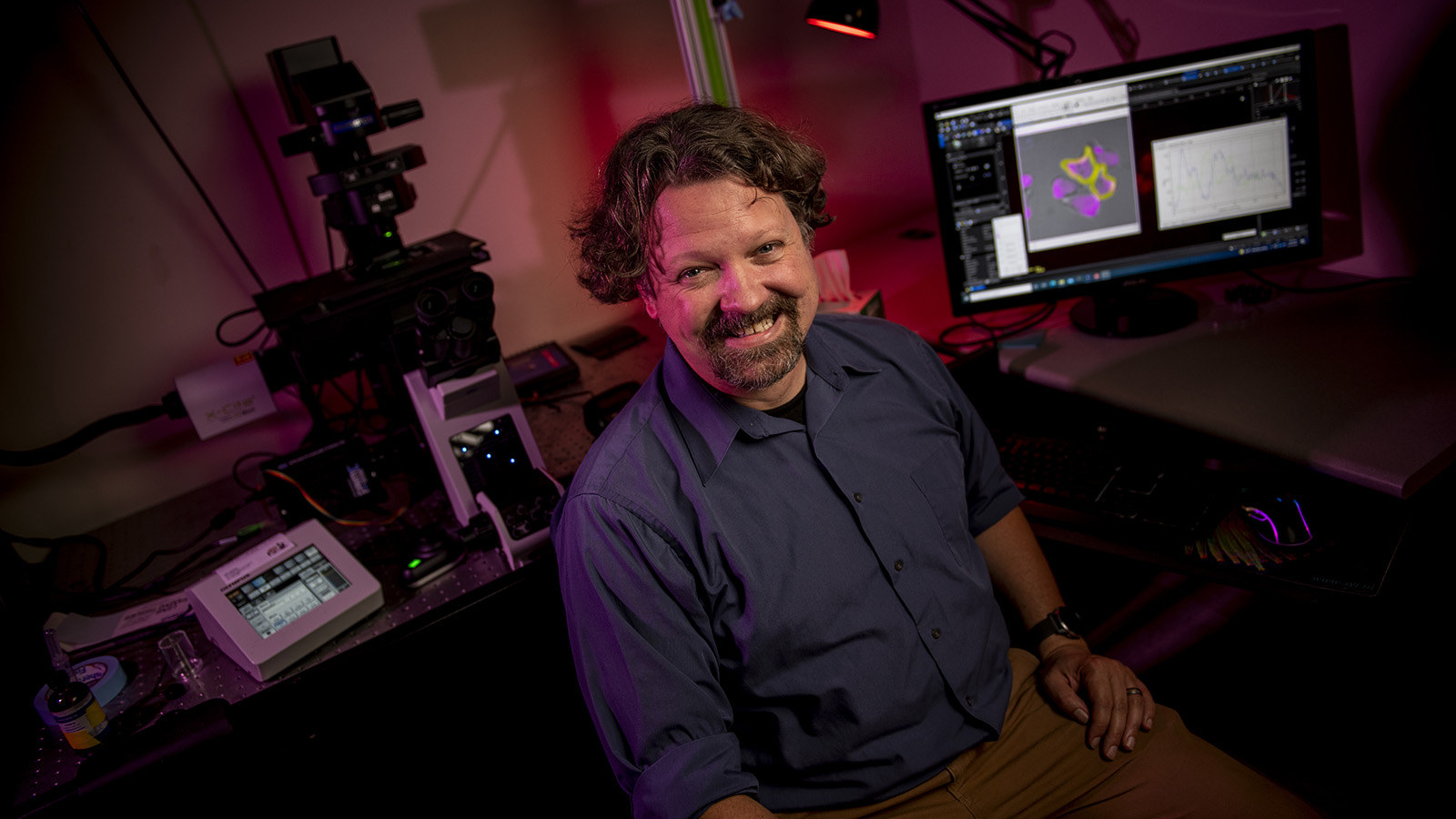
Kelley Lab research paper in top 100 downloaded in microbiology for Scientific Reports
Research published by Joshua Kelley, University of Maine assistant professor of biochemistry in the Department of Molecular and Biomedical Sciences, and the graduate student Katherine Jarvis has been named one of the top 100 downloaded microbiology papers for Scientific Reports for 2021.
The paper, “Temporal dynamics of viral load and false negative rate influence the levels of testing necessary to combat COVID-19 spread,” received 12,756 article downloads in 2021. The study used a computer model that weighed the dynamics of both viral load and false negative rate of tests on the ability of testing to combat viral spread of COVID-19 for a university-sized population. The results showed that nonuniform distribution of viral loads and false negative tests required a higher frequency of testing over a greater proportion of the population in order to keep the virus under control through university testing plans.
“When COVID-19 shut everything down in early 2020, many universities, including UMaine, were trying to come up with plans to reopen safely. I was at a meeting where the problem of ‘how many tests and how often?’ was brought up, and I thought, ‘this is a solvable problem,’ and I wanted to help the University make the best decisions they could,” says Kelley.
“Our paper is significant in that simplistic models of viral spread ignored the fact that transmissibility and detectability of the virus changed with time. A model with simplistic assumptions about those variables would lead to overly optimistic ideas about how often testing would be needed in order to stop the virus,” he says.
Scientific Reports is an online peer-reviewed open access scientific journal published by Nature Portfolio, covering all areas of the natural sciences. The journal published more than 1,080 microbiology papers in 2021, and so a position in the top 100 most downloaded articles indicates the science is of real value to the research community.
“I published it because I wanted these ideas to be out there in case they were helpful to others, but I really didn’t expect it to get the attention that it has,” says Kelley. “I’m proud of the work we did on this paper, and I hope that it has been helpful to the people who have looked at it.”
The study was published in Scientific Reports in April 2021.
Kelley’s research primarily focuses on the spatio-temporal regulation of G-protein coupled receptor signaling using yeast as a model organism, with live cell microscopy in microfluidics devices, computational image analysis, yeast genetics and biochemical approaches.
“I normally study how signaling molecules work in time and space,” says Kelley. “From the point of view of a mathematical model, a protein transmitting a signal to another protein is no different from a sick person transmitting a virus to a healthy person, and so I was able to apply what I know of modeling cell signaling to address questions about viral spread.
“When we completed the COVID-19 model, we realized that the approach we took for epidemiology may actually work very well for our receptor signaling modeling efforts, and so Katherine Jarvis built a new model of receptor signaling for her master’s thesis that we are currently working on finishing up for a publication.”
All the most downloaded articles can be viewed on Scientific Reports’ Top 100 in Microbiology page.
Contact: Sam Schipani, samantha.schipani@maine.edu
